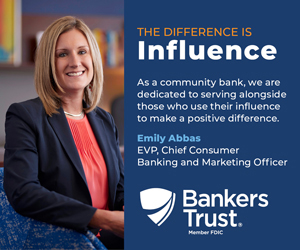O’Halloran finds new calling in helping children

.floatimg-left-hort { float:left; } .floatimg-left-caption-hort { float:left; margin-bottom:10px; width:300px; margin-right:10px; clear:left;} .floatimg-left-vert { float:left; margin-top:10px; margin-right:15px; width:200px;} .floatimg-left-caption-vert { float:left; margin-right:10px; margin-bottom:10px; font-size: 12px; width:200px;} .floatimg-right-hort { float:right; margin-top:10px; margin-left:10px; margin-bottom:10px; width: 300px;} .floatimg-right-caption-hort { float:left; margin-right:10px; margin-bottom:10px; width: 300px; font-size: 12px; } .floatimg-right-vert { float:right; margin-top:10px; margin-left:10px; margin-bottom:10px; width: 200px;} .floatimg-right-caption-vert { float:left; margin-right:10px; margin-bottom:10px; width: 200px; font-size: 12px; } .floatimgright-sidebar { float:right; margin-top:10px; margin-left:10px; margin-bottom:10px; width: 200px; border-top-style: double; border-top-color: black; border-bottom-style: double; border-bottom-color: black;} .floatimgright-sidebar p { line-height: 115%; text-indent: 10px; } .floatimgright-sidebar h4 { font-variant:small-caps; } .pullquote { float:right; margin-top:10px; margin-left:10px; margin-bottom:10px; width: 150px; background: url(http://www.dmbusinessdaily.com/DAILY/editorial/extras/closequote.gif) no-repeat bottom right !important ; line-height: 150%; font-size: 125%; border-top: 1px solid; border-bottom: 1px solid;} .floatvidleft { float:left; margin-bottom:10px; width:325px; margin-right:10px; clear:left;} .floatvidright { float:right; margin-bottom:10px; width:325px; margin-right:10px; clear:left;}
For 23 years, Jim O’Halloran found satisfaction in running a successful truck dealership. Now, the retired business owner is involved in a much different venture, one that could potentially help thousands of children. His new company, Child Welfare Data Net LLC, has developed a software system he hopes will streamline the assessment and documentation of injuries in suspected child-abuse cases.
O’Halloran and his two partners exhibited a prototype of the Child Abuse Injury Scoring System (CAISS) last week at the Prevent Child Abuse Iowa annual conference held in West Des Moines. In the next several weeks, Blank Children’s Hospital will begin testing the system, which enables users to precisely detail a child’s injuries by simply pointing to on-screen electronic diagrams of areas of the body and using drop-down lists of terms to further describe them. The system creates a detailed list of injuries, assigns a numeric rating of the overall severity of the case and creates a portable file that can be downloaded or e-mailed.
“I want to see this developed for the good of society, and maybe at the same time help parents to learn how to parent better,” O’Halloran said. “It’s such a motivator; it could be such a positive contribution to society.”
Key issue
O’Halloran, 64, said two books have particularly helped shape his personal goals since retiring five years ago: “Aging Well: Surprising Guideposts to a Happier Life From the Landmark Harvard Study of Adult Development” by George E. Vaillant and “Authentic Happiness: Using the New Positive Psychology to Realise Your Potential for Lasting Fulfilment” by Martin E.P. Seligman.
“One of the key issues in my life is that I want to help people,” he said. “If you’re helping others, then you’re getting out of focusing on yourself. I think the driver is to help other people.”
An advocate of W. Edwards Deming’s principles of continuous improvement, O’Halloran said he was also intrigued by the challenge of developing a system that could significantly improve the child-abuse reporting process.
The CAISS concept caught the attention of Dr. Rizwan Shah, medical director of the Regional Child Protection Center at Blank Children’s Hospital, who served as the project’s medical adviser and will also oversee the testing of the software in a hospital setting.
“Nothing like this has ever been attempted,” Shah said. “There is no existing program anywhere in the United States, I think. It’s about time we should have something; it’s an improvement over trying to visualize the bruises and then trying to guess in your own mind what you’re looking at.”
More than 1,700 cases of child abuse involving physical injuries were reported in Iowa in 2007, or 12 percent of all abuse cases reported, according to the latest data available from the Iowa Department of Public Health. The majority of the 13,529 cases reported in 2007, 74 percent, involved neglect without injuries. Though the number of cases involving physical abuse has declined during the past two years, officials are concerned that stress generated by the recession may cause the number of cases to jump.
Chance meetings
The idea for the system originated nine years ago from a discussion O’Halloran had at his son’s wedding with a longtime friend, Bill Theisen, who was retiring from a career in social work. Theisen had developed the notion of using electronic diagrams to replace handwritten notes that might fill several file folders. For the next two years, O’Halloran offered his business expertise and time to Theisen, as the two tried unsuccessfully to interest a state agency or nonprofit organization in buying into the idea. Unable to find a champion, they reluctantly dropped the idea.
Then, in 2007, at another wedding, O’Halloran met Kim Danos, a human services consultant whose enthusiasm for the project encouraged O’Halloran and Theisen to revive it. The two partners brought in a software developer, Steve Elfvin, who devised a sophisticated computer program that maps more than 2,000 points on the body and assigns a severity score for each case, based on the sizes and locations of the injuries as well as the age of the child.
Shah said having an automated system that enables quick and accurate documentation will be valuable.
“In a busy practice, I know for sure people forget to measure how big the injury is; actually taking a measurement takes time,” she said. “Once an injury is gone, you can’t go back and do it.” The system will also help improve communication between doctors and child-abuse experts, Shah said.
“If somebody in the rural part of Iowa is seeing the child and contacting a child-abuse expert like myself on the phone, what they’re telling me on their end may not be the image I’m getting in my mind from the telephone conversation,” she said. “The computer program’s child-abuse injury scale makes it possible for improvement in that kind of communication, where an image can be transmitted where I can see what they’re seeing and what they’re asking questions about.”
Shah will lead the evaluation of the program, using anonymous data from charts of previous abuse cases that will be entered into the system.
“The second arm of the research will be that I will ask the resident (physicians) in training to assess the injuries first on a piece of paper after reviewing the chart, and then to put the same information on the computer to see if they are coinciding,” she said. “That will tell us about the sensitivity of the program.”
Decline in cases
Stephen Scott, executive director of Prevent Child Abuse Iowa, saw a demonstration of the system at his organization’s conference last week.
“It certainly has a degree of rigor and specificity that’s unusual in this field,” he said, “But sometimes in cases there are complexities that are difficult to measure.”
Scott said he’s unsure whether O’Halloran’s idea of using overall trend data from the system to devise more effective parenting and abuse-prevention classes is feasible.
“Ultimately, we would rather not have abuse occur in the first place,” he said. However, “anything that would stop the cycle of abuse from becoming worse and possibly that could help we would be in favor of.”
Though the number of reported cases involving physical injuries declined by 36 percent between 2002 and 2007, “the caution about looking forward is that we do know there’s an association of poverty and stress with child abuse, and unfortunately we are entering a period when those risk factors are increasing in many areas of the state,” Scott said.
O’Halloran said he and his partners have three years of primarily “sweat equity” in the project, plus some personal funds that O’Halloran has put into the company. Any profits from the business will go to child-abuse education and research activities, he said.
“If the test is successful as we think it will be, then the capital needs will become quite large,” he said. “We know we will need several hundred thousand dollars to make it work, but we want to make sure we have a product of value before we put that in.”
O’Halloran said he is considering personally investing between $50,000 and $100,000 in the project.
“If we have a product that’s meaningful, then I think we could get investors without any problem,” he said. “My first goal would be to see if there is a company that would adopt this as a strategic fit.”








